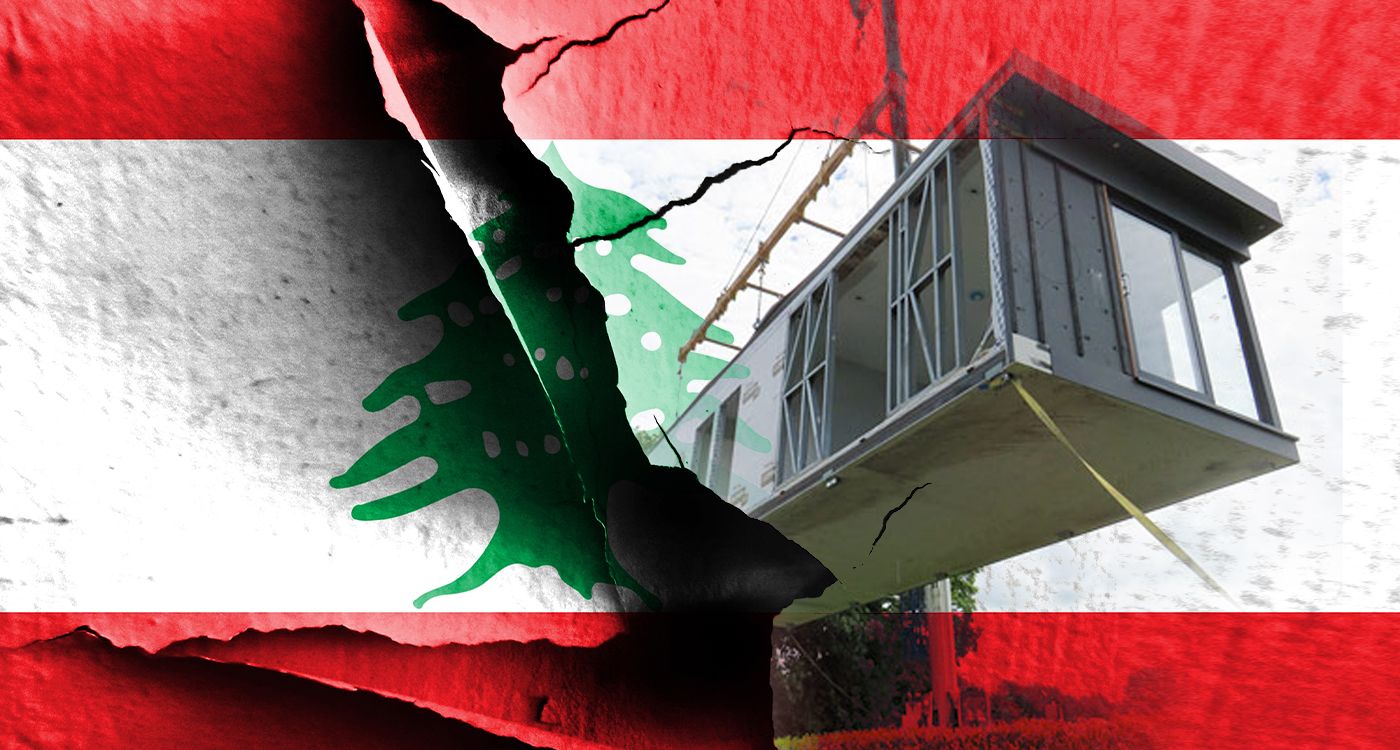
The majority of the displaced are currently concentrated in shelter centers that have reached full capacity. This led the caretaker Minister of Environment to announce a government plan under review to set up prefabricated housing on open public lands to accommodate them.
As the conflict between Hezbollah and Israel escalates, Lebanon’s displacement crisis grows more severe each day. Around 1.4 million Lebanese have been forced to flee areas targeted by shelling, seeking safety in other regions. Some have rented homes at their own expense, others are staying with relatives, while the majority are concentrated in overcrowded shelter centers that have reached full capacity. In response, the Minister of Environment announced a government plan, in coordination with international donors, including Arab countries, to consider establishing prefabricated housing on open public lands to shelter the displaced.
This issue has raised questions about the legality of the project, the permitted duration for keeping prefabricated homes, and whether they should be imported or locally manufactured in Lebanon.
Civil engineer Alaa Kurdieh told This is Beirut that these homes can either be produced locally or imported from Turkey, though imported units are generally more expensive. Locally manufactured homes cost approximately $5,000 for a basic one-room unit with essential amenities, while larger homes with multiple rooms can cost up to $25,000.
Furthermore, Kurdieh highlights that small prefabricated homes are primarily suited for wartime conditions, as they cannot accommodate water tanks. Their prices typically range between $5,000 and $7,000. Larger homes, priced between $15,000 and $25,000, are fully equipped and built to a high standard.
As for the durability and resilience of these homes against storms and strong winds, Kurdieh explains that when professionally designed and built with precision to meet public safety standards, they are suitable and safe for year-round living.
Furthermore, the civil engineer highlights a critical issue: the exploitation of the crisis by some retailers offering substandard commercial homes, which could put their residents at risk.
As regards the legality of these homes, lawyer Maya Jaara explains that the large number of displaced—leading most shelter centers, particularly in Beirut, to reach full capacity—prompted the caretaker government to explore several solutions, including the establishment of prefabricated homes for the displaced on open public lands, in cooperation with donor organizations, relying heavily on support from Arab countries.
The Ministry of Public Works, acting on the instructions of Caretaker Prime Minister Najib Mikati, has identified public lands suitable for the construction of prefabricated homes. Three locations have been designated: Beirut, the Beqaa Valley, and northern Lebanon.
According to Maya Jaara, “The top priority should be preserving the demographic balance of these areas, especially given the potential for a prolonged conflict and the extensive destruction this time. It is essential to keep residents close to their original regions, provided those areas are safe, and to restrict construction to public lands under state supervision and within a defined timeframe.”
Jaara emphasized that the so-called incomplete ownership law, which allows some displaced to place prefabricated homes on state or municipal lands—essentially public, unregistered property—lacks legal validity. She argued that such a law should not be passed, as it would grant full ownership of these lands to the occupants after five years. This would undermine the principles of fairness and equality in property distribution, create inequality among citizens, and could result in the long-term displacement of southern residents, similar to what happened in areas like Jbeil, Ouzai, and others in the past.
According to Maya Jaara, “There are quicker and more affordable solutions that can be implemented temporarily until a ceasefire is reached and displaced people return to their villages to begin the reconstruction process.”
One such solution is “making use of vacant state buildings and public spaces, as well as setting up tents similar to those used in Kahramanmaraş after last year’s earthquake. Each tent measures 20 square meters and includes all the necessary amenities for a dignified living. Simultaneously, efforts should focus on securing larger prefabricated homes to be placed near destroyed houses as temporary shelters while awaiting the rebuilding of homes or restoration of damaged properties.”
Jaara outlined that many public facilities and buildings in Beirut remain vacant and could be used temporarily. Data from the Ministry of Finance shows 1,285 properties owned by the Lebanese state, 1,164 properties owned by the Beirut Municipality, and 111 properties belonging to the state (including 17 registered under ministries and 16 under public institutions or directorates). The Central Bank of Lebanon (BDL) also owns ten properties. Among the vacant buildings within state-owned property in Beirut are the Mar Mikhael train station, buildings acquired for the Fouad Boutros Highway project—renovated after the port explosion—the Beirut International Exhibition and Leisure Center (BIEL), sports facilities, and more. These public and municipal authorities control a range of resources, including these properties, which, if included in the emergency plan, could offer additional opportunities to house a large number of displaced people or provide temporary relief until they return to their villages.
Finally, the lawyer clarified: “The law regulating buildings is Lebanese Construction Law No. 646/2004, but it does not cover prefabricated homes, whether made of wood or any material other than concrete. The only requirement would be a permit from the municipality or the Ministry of the Interior."



Comments